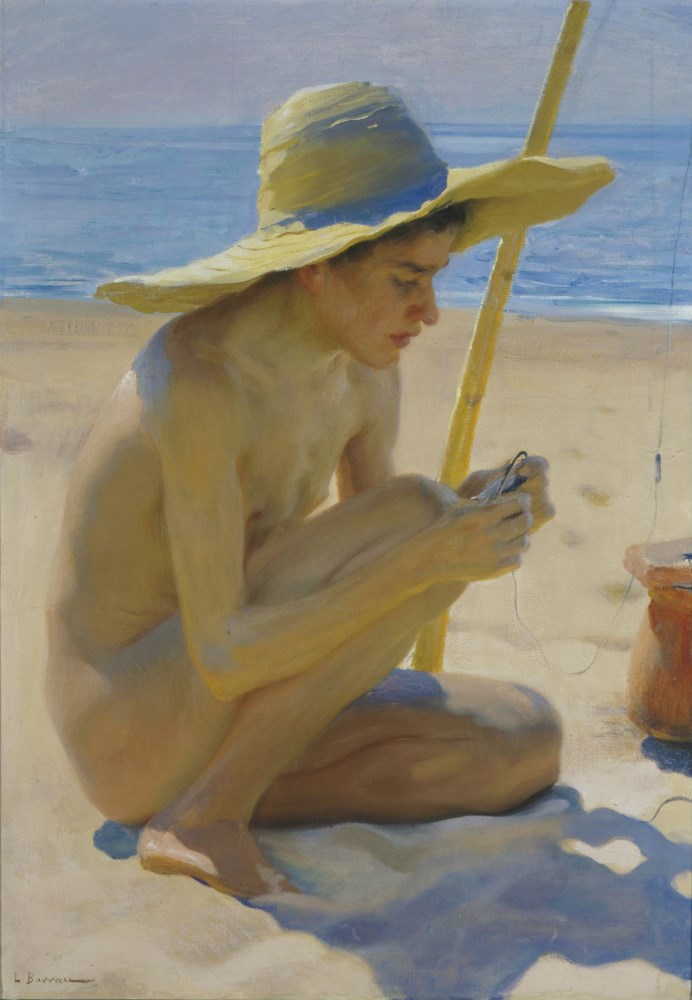Description:
Laureà Barrau i Buñol (1863-1957) was a Spanish artist born in Barcelona. After completing high school, he simultaneously studied at the School of Engineering, following in his father’s footsteps to obtain a technical education, and at the School of Fine Arts in Barcelona. There he met Claudia Lorenzale and Antoni Caba, from whom he learned drawing and painting. He honed his practical skills during his stay in Madrid, where in 1882 he copied masterpieces at the Prado Museum. At the age of 20 he moved to Paris and was accepted into Jean-Léon Gérôme’s studio, a representative of academic painting. Perhaps it was thanks to him that Barrau i Buñol became interested in the Orientalist and exotic trend, which led to his travels in the Andalusian regions of Granada. Thanks to a scholarship, he spent the next four years in Rome, where he met such artists as Enric Serra, Arcadi Mas and Fondevila, or Ramón Tusquets. From 1887 he regularly exhibited his works at the Sala Parés in Barcelona, one of the most important Spanish galleries, which is now recognized as the oldest gallery in the region. Today, the works of Laureà Barrau i Buñol can be found in museums in Spain, but also in Europe and America: Paris, Brussels, Buenos Aires, Montevideo, Rio de Janeiro and Rogalin.
His early works are part of the trend of historical painting, the best example of which is “Girona Surrender” from around 1886. With time he was influenced by landscape painters, as evidenced by paintings depicting the Catalan coast of Caldetes or Tossa de Mar. From 1911 he moved to Ibiza, which became a source of inspiration for him for the next 40 years.
Description of the painting:
“Boy with a Fishing Rod” is a full-body portrait showing the image of a naked young boy in a bent sitting position. His body is shown three-quarters to the right of the viewer, while the lower part of the body and face are shown in profile. His right leg, bent at the knee, provides support for the hands holding a small fish. The only element of clothing is a straw hat with a wide brim, casting a shadow on the sand on which the boy has squatted. Dark hair protrudes from the head covering, contrasting with his rosy body. His focused gaze is directed towards his hands, so his eyes, covered by eyelids, are invisible to us. To his left he has a fishing rod stuck in the sand, and opposite him a vessel, the semi-fragment of which was marked by the artist at the border of the canvas.
The background to the boy, occupying almost the entire pictorial surface, are three horizontal strips: beach, sea and sky. Due to the lowered perspective, the first is the most extensive and fills two-thirds of the painting field.
An important factor in building the color values in this representation is the use of light. Sharp solar rays affect the lightening of Barrau i Buñol’s color palette. We won’t find any black here. Colored reflexes emphasizing the darker parts of the model are made up of a mixture of ultramarine and white. Subtle pastel shades of blue correspond to beige, pink and yellow, and warm and cold tones alternate with each other, marking the shape of the shadow in the right lower corner of the work. Undoubtedly, the influence of his travels to France and the beginnings of Impressionism there at the end of the 19th century had an effect on the change of the artist’s style. Another factor was getting to know Joaquín Sorolla y Bastida, one of the most outstanding Spanish Impressionists and Luminists. Comparing the works of both painters, you can find many common features, starting from the selection of topics related to sun-drenched coastal landscapes, working in the open air, or recognizing light as the main means of forming the composition.


